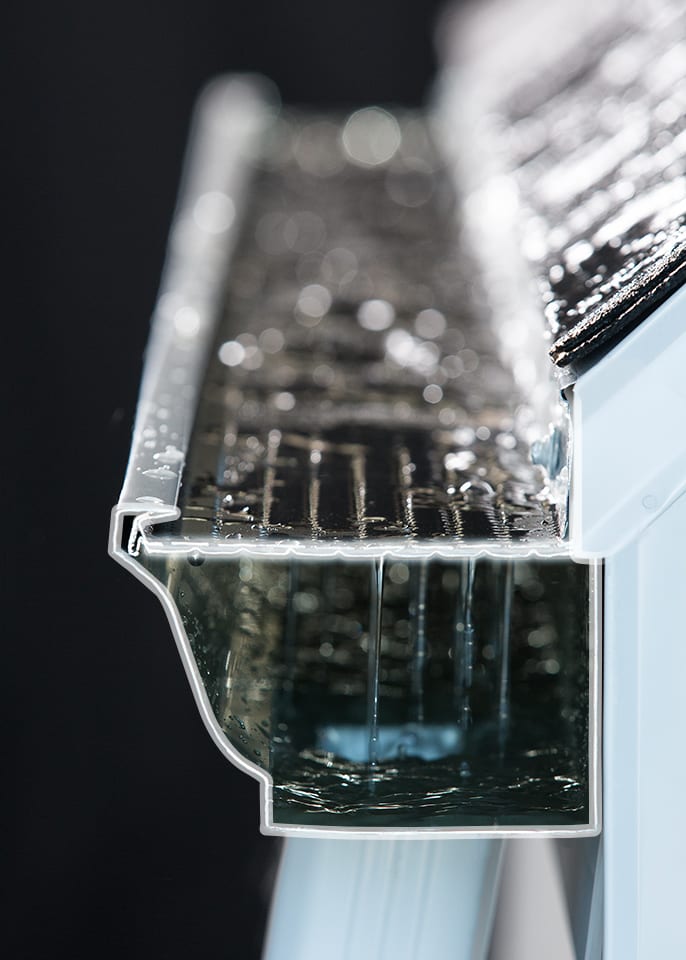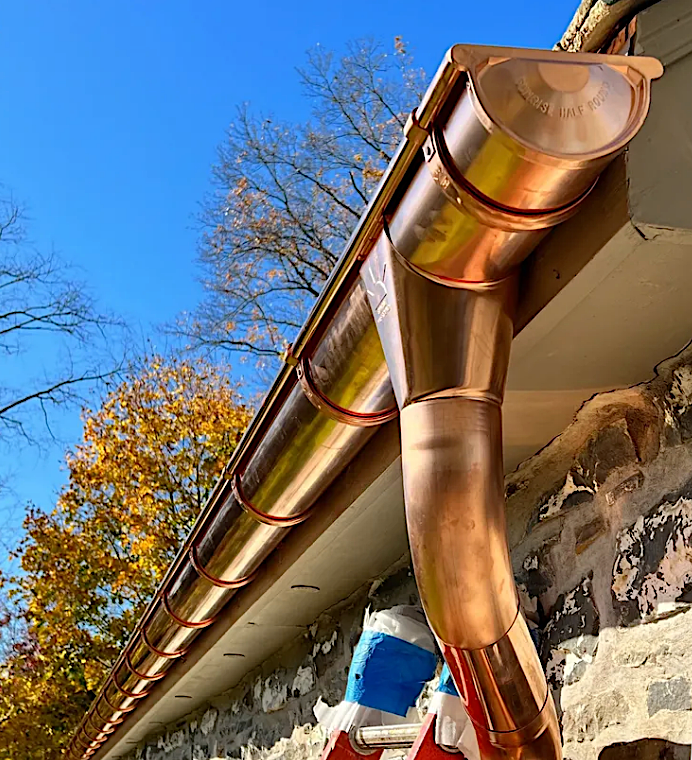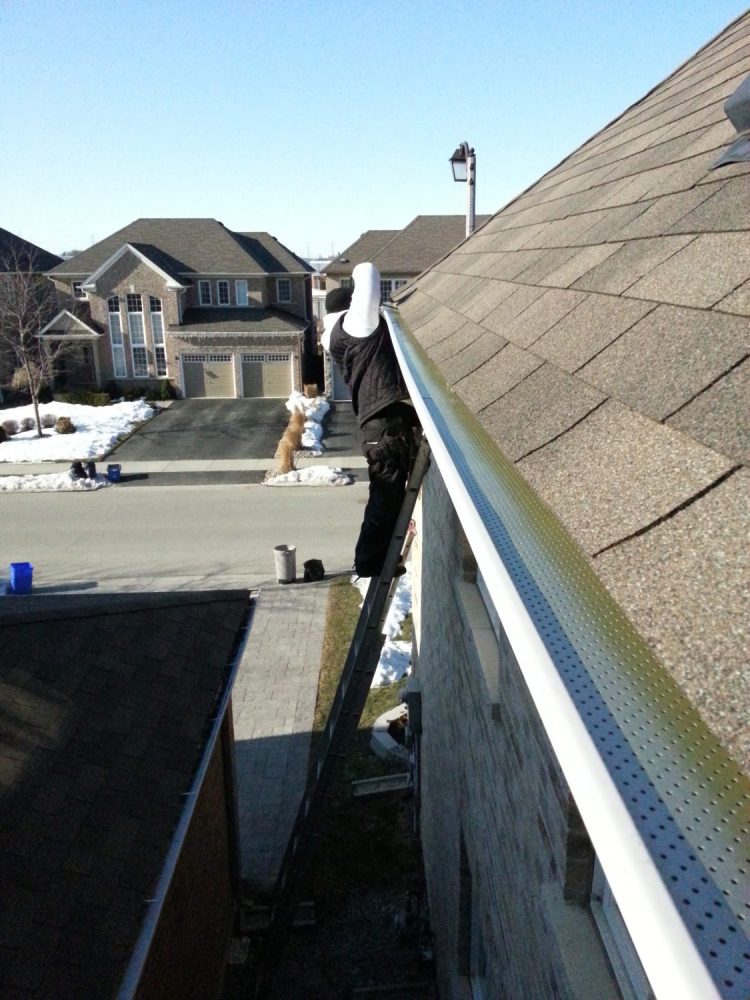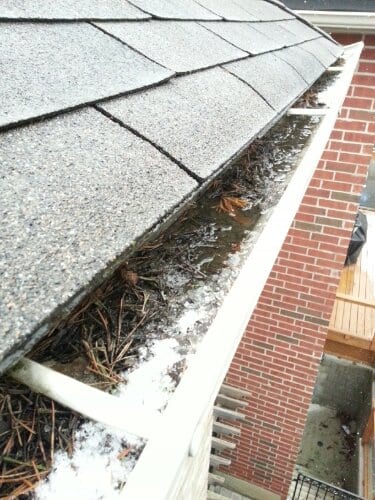 What Are Eavestrough or Gutters? Everything You Need to Know!
What Are Eavestrough or Gutters? Everything You Need to Know!
Introduction
Eavestroughs, commonly known as gutters, are narrow channels installed along the edges of your home’s roofline. Their primary function is to collect rainwater and direct it safely away from your home’s foundation, preventing water damage, basement flooding, and landscape erosion.
Why are Eavestroughs Important?
In Ontario cities like Mississauga, Oakville, Milton, Etobicoke, and Brampton, where weather conditions range from heavy rains to harsh winters, properly functioning gutters are essential. They protect your home’s foundation from water damage, prevent basement flooding, and help avoid landscape erosion by controlling water flow during heavy rains.
Gutters Materials
Choosing the right type of gutter material is crucial for homeowners in Mississauga, Oakville, Milton, Etobicoke, and Brampton. Here are the most common types:
- Galvanized Metal Gutters : (Primarily discontinued)
- Aluminum Gutters: Lightweight, rust-resistant, and durable, aluminum gutters are an excellent choice for most homes in Ontario. They are customizable, affordable, and long-lasting.
- Vinyl Gutters: Inexpensive and lightweight but less durable, especially in Ontario’s harsh winter climates, as they can become brittle and crack over time.
- Steel Gutters: Strong and durable, able to withstand severe weather. However, they are prone to rust if not properly maintained.
- Copper Gutters: Highly durable with great aesthetic appeal, often seen on upscale homes. They develop an attractive patina over time but come with a higher upfront cost.
Styles or Types of Gutters (Eavestroughs) 
Beyond materials, gutters also come in various styles:
- K-Style Gutters: The most common style due to their decorative appearance and high water-carrying capacity. They fit seamlessly with most modern homes.
- Half-Round Gutters: Have a classic, traditional appearance often used on historic or upscale homes. They offer efficient water flow but may require additional maintenance due to debris buildup.
- Alu-Rex Gutters: Innovative seamless aluminum gutters with integrated leaf guards, offering superior performance, reduced maintenance, and greater durability, ideal for Ontario climates.
- Boxed Gutters: Rectangular-shaped gutters typically built into the roof structure, offering a clean appearance that blends seamlessly into the home design. Commonly used in commercial and modern residential properties.
- Built-in or Enclosed Gutters: Integrated into the roof’s architecture, hidden from view, providing a sleek appearance. They require specialized installation and careful maintenance to avoid hidden water damage.
Eavestrough Installation Tips
 Proper eavestrough installation is critical. Factors homeowners in Brampton, Milton, and nearby areas should consider include:
Proper eavestrough installation is critical. Factors homeowners in Brampton, Milton, and nearby areas should consider include:
- Professional Installation: Hiring a local expert ensures your gutters are installed correctly, preventing costly water damage down the line.
- Size and Capacity: For areas prone to heavy rainfall, like Oakville and Mississauga, choosing larger gutters (6-inch) may be beneficial.
- Gutter Slope: Gutters should be pitched correctly—approximately half an inch every 10 feet—to ensure proper water drainage.
- Downspouts: Properly placed downspouts direct water safely away from your home’s foundation.
Maintenance and Cleaning
Regular maintenance is essential to keep your gutters performing optimally:
- Clean gutters twice a year, ideally in spring and fall.
- Regularly inspect for damage such as cracks, rust, or sagging.
- Consider installing gutter guards if your home is surrounded by trees.
Common Issues and Repairs

Residents in Milton, Etobicoke, and Brampton often face common gutter issues:
- Clogged Gutters: Regular cleaning can help prevent clogs that lead to overflow.
- Leaks and Holes: Sealing minor leaks early can prevent more significant issues.
- Sagging Gutters: Realign and reinforce gutter supports to avoid further damage.
Cost Considerations
The cost of gutter installation varies based on material and home size:
- Vinyl: $3-$7 per linear foot (primarily for DIY)
- Aluminum: $7-$20 per linear foot (recommended for durability and value)
- Steel: $24-40- per linear foot
- Copper: $35-$50 per linear foot (premium choice)
Investing in quality materials and professional installation is recommended to minimize future repair costs.
Why Choose Maxima Aluminum?
Maxima Aluminum has a strong reputation serving Mississauga, Oakville, Milton, Etobicoke, and Brampton with top-quality aluminum gutters. We specialize in professional eavestrough installation, maintenance, and repair services tailored specifically to Ontario homes.

 416.677.8191
416.677.8191
Protect your home today with the best gutters on the market. Contact Maxima Aluminum now for a free consultation and quote. Fill out our online form or call us directly—our local team is ready to help keep your home safe and dry!

 What Are Eavestrough or Gutters? Everything You Need to Know!
What Are Eavestrough or Gutters? Everything You Need to Know!
 Proper eavestrough installation is critical. Factors homeowners in Brampton, Milton, and nearby areas should consider include:
Proper eavestrough installation is critical. Factors homeowners in Brampton, Milton, and nearby areas should consider include:
